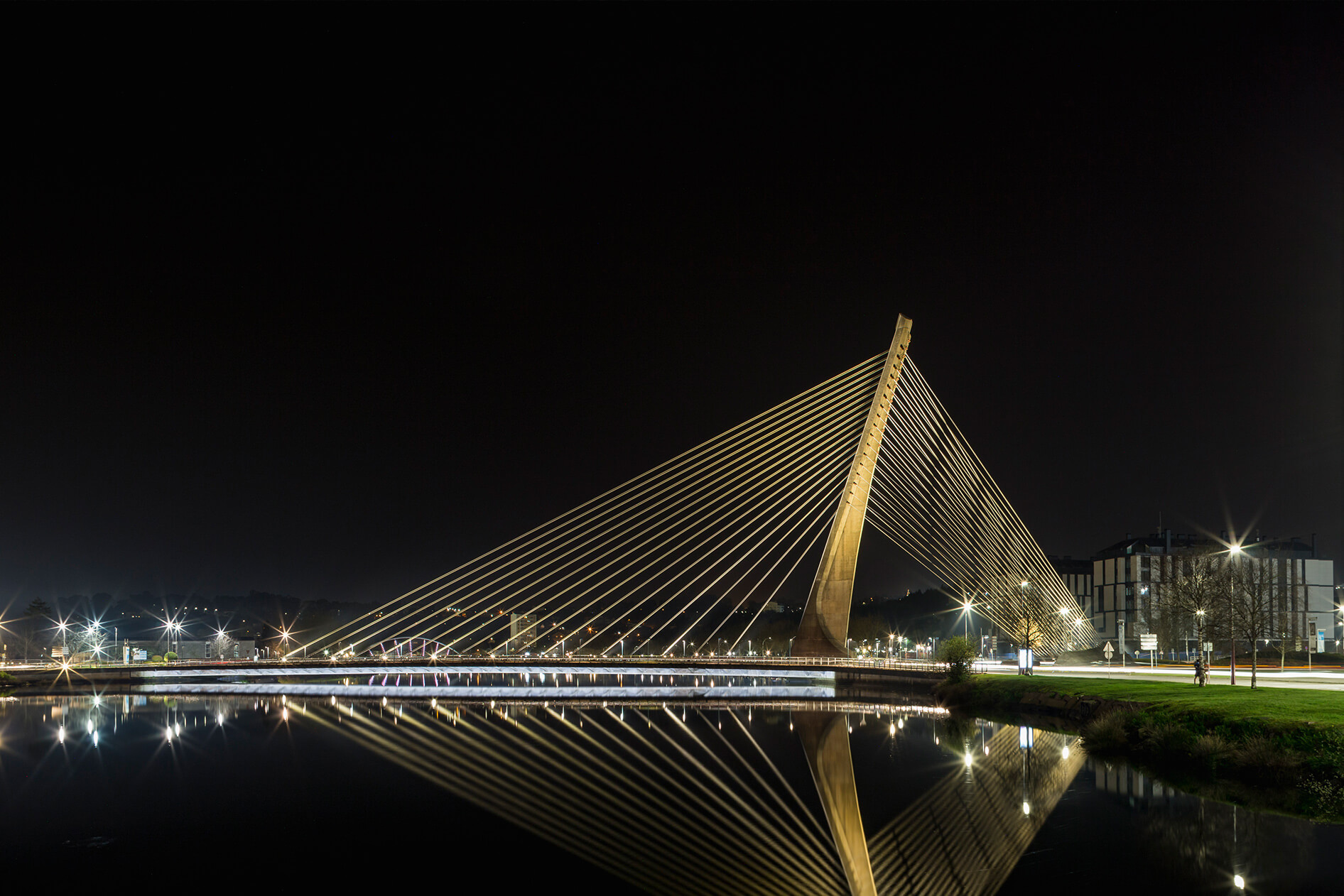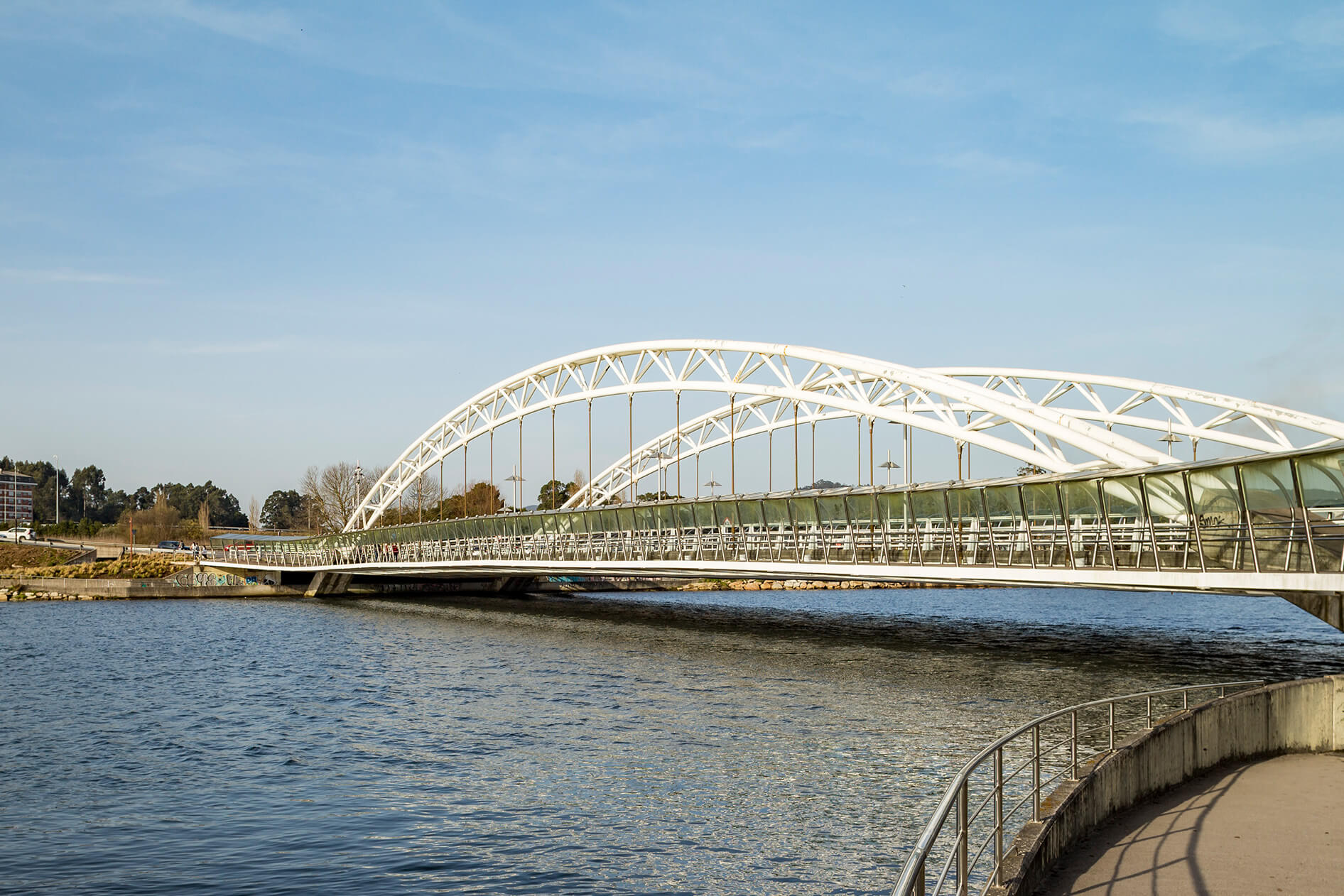Pontevedra, the city of bridges
In the municipality of Pontevedra alone there are more than three hundred bridges over rivers and streams, running from the Lérez to the Gafos, passing through the Almofrei or the Verdugo. The history and origin of the city are linked to a first original Roman bridge of which no traces have been found and to which Ponte Veteri owes its name, where the Burgo bridge is located today. Another bridge with a lot of history in the municipality is Ponte Sampaio, which joins Pontevedra with Soutomaior. A walk through the city of Pontevedra along on the banks of the Lérez is a clear reflection of its history from the oldest bridge taking you all the way from Burgo Bridge, to the most recent landmark, the Corrientes Bridge.

Burgo Bridge
The history of Pontevedra is inseparably linked to that of the old Roman bridge, Ponte Veteri. The discovery of a Hadrian’s milestone, dated 134, indicates that it could be downstream from the current bridge, the Burgo Bridge. Its origin dates back to the 12th century due to the ruinous state of the previous one, which had served to baptise the city and form part of its heraldic emblem.
The current bridge is the result of several reforms over the centuries. The original bridge had fifteen arches, of which only eleven are visible today, the rest being buried, a fact discovered in the excavations of 2006, the first major reform took place in the sixteenth century and in the seventeenth century would suffer the consequences of a great flood. A drawing by Pier Maria Baldí from the voyage of Cosimo III de Medici in 1669 gives an X-ray of the bridge at that time, and of the small castle at the north end and the tower of the bridge at the south end. The whole was destroyed after the English invasion of 1719. Already in 1954 a great reform was carried out to reinforce the vaults and in which the scallop shells were carved by the Way of St. James.
Recently it has been remodelled and converted into a pedestrian bridge and equipped with various types of lighting, such as the blue dots that mark the Camino de Santiago and the one that illuminates the arches.
Illumination of the Burgo Bridge
Tirantes Bridge
The Los Tirantes Bridge was inaugurated in 1995. Nine years later it was selected as one of the 33 most outstanding bridges in the history of Spain by the Ministry of Public Works. This new infrastructure impressively crossing the Lérez River marked a new aesthetic in the city, complete with the auditorium and the new fairgrounds. It is the work of Leonardo Fernández Troyano and Javier Manterola, who designed a single-span bridge 120 metres long, a 63-metre-high reinforced concrete tower from which 17 pairs of braces emerge, the front ones supporting the deck and the rear ones resting on two concrete bases on solid ground, acting as counterweights that balance the tower’s strength.
The bridge marks the beginning of routes that run along the river Lérez and reach the Illa das Esculturas, a place of great natural beauty where you can enjoy hiking, art and culture.

Tirantes Bridge
Corrientes Bridge/ Bridge of the Currents
The Corrientes Bridge, inaugurated in 2012, is the most recent of all the bridges that cross the Lérez River in the city of Pontevedra. It is a Bow-string arch bridge with a single 132 m span. It consists of two metallic arches, from which 17 cables support the deck. At both ends there are two tuve design structures that connect the two banks. This bridge allows the mobility of both vehicles and pedestrians, as it incorporates a pedestrian area and a bicycle lane.

Corrientes Bridge
La Barca Bridge
The La Barca Bridge owes its name to the boats that crossed this place dedicated to the Benedictine monks. In 1867 a wooden structure with a lifting area was built to allow the passage of larger boats that were heading to the nearby docks of the Burgo bridge. Later, in 1887, the deterioration of the structure and the noise of the drawbridge led to the construction of a new bridge, which was not completed until 1905.
The central part of the structure, which can be seen today, was made of metal, due to the trends of the time, but the effects of salinity were not taken into account. Therefore, in the middle of the 20th century concrete was injected into the structure and later the abutments were remodelled, replacing the arches with larger ones to widen Uruguay and Corbaceiras Avenues, on the one hand, and on the other, due to the construction of the AP-9 motorway. The lighting of the bridge and the wooden canopy that protects the sidewalks have recently been renewed.

La Barca Bridge